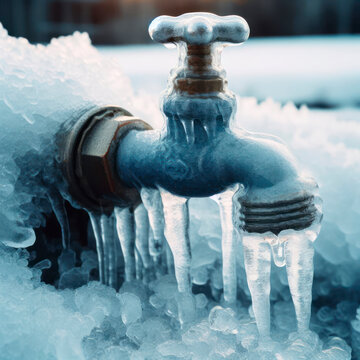Every person seems to have their unique idea involving 6 Ways to Prevent Frozen Pipes.

Cold weather can ruin your plumbing, specifically by freezing pipes. Here's exactly how to stop it from happening and what to do if it does.
Introduction
As temperatures decrease, the threat of frozen pipes increases, possibly causing pricey fixings and water damages. Comprehending how to prevent icy pipes is vital for home owners in cool environments.
Comprehending Frozen Pipes
What causes pipelines to ice up?
Pipes freeze when revealed to temperature levels below 32 ° F (0 ° C) for prolonged durations. As water inside the pipes ices up, it expands, putting pressure on the pipeline wall surfaces and potentially creating them to break.
Threats and damages
Frozen pipelines can result in water supply disturbances, home damages, and expensive repair work. Burst pipelines can flooding homes and cause considerable architectural damage.
Indicators of Frozen Pipes
Identifying frozen pipelines early can prevent them from rupturing.
Just how to recognize frozen pipes
Seek decreased water flow from taps, unusual odors or noises from pipes, and visible frost on revealed pipelines.
Avoidance Tips
Shielding at risk pipelines
Cover pipelines in insulation sleeves or utilize heat tape to safeguard them from freezing temperatures. Focus on pipelines in unheated or outside areas of the home.
Heating techniques
Maintain interior rooms appropriately heated up, especially areas with pipes. Open cupboard doors to allow cozy air to circulate around pipelines under sinks.
Protecting Exterior Plumbing
Garden tubes and outside faucets
Separate and drain yard pipes before winter season. Install frost-proof faucets or cover outdoor taps with insulated caps.
What to Do If Your Pipelines Freeze
Immediate actions to take
If you believe frozen pipelines, keep faucets available to relieve stress as the ice thaws. Use a hairdryer or towels soaked in hot water to thaw pipelines gradually.
Long-Term Solutions
Architectural modifications
Take into consideration rerouting pipes far from outside walls or unheated locations. Add additional insulation to attics, basements, and crawl spaces.
Upgrading insulation
Invest in high-grade insulation for pipes, attic rooms, and walls. Correct insulation assists keep consistent temperature levels and minimizes the threat of frozen pipes.
Final thought
Preventing frozen pipes needs aggressive steps and quick actions. By recognizing the reasons, signs, and preventive measures, property owners can secure their pipes during cold weather.
5 Ways to Prevent Frozen Pipes
Drain Outdoor Faucets and Disconnect Hoses
First, close the shut-off valve that controls the flow of water in the pipe to your outdoor faucet. Then, head outside to disconnect and drain your hose and open the outdoor faucet to allow the water to completely drain out of the line. Turn off the faucet when done. Finally, head back to the shut-off valve and drain the remaining water inside the pipe into a bucket or container. Additionally, if you have a home irrigation system, you should consider hiring an expert to clear the system of water each year.
Insulate Pipes
One of the best and most cost-effective methods for preventing frozen water pipes is to wrap your pipes with insulation. This is especially important for areas in your home that aren’t exposed to heat, such as an attic. We suggest using foam sleeves, which can typically be found at your local hardware store.
Keep Heat Running at 65
Your pipes are located inside your walls, and the temperature there is much colder than the rest of the house. To prevent your pipes from freezing, The Insurance Information Institute suggests that you keep your home heated to at least 65 degrees, even when traveling. You may want to invest in smart devices that can keep an eye on the temperature in your home while you’re away.
Leave Water Dripping
Moving water — even a small trickle — can prevent ice from forming inside your pipes. When freezing temps are imminent, start a drip of water from all faucets that serve exposed pipes. Leaving a few faucets running will also help relieve pressure inside the pipes and help prevent a rupture if the water inside freezes.
Open Cupboard Doors
Warm your kitchen and bathroom pipes by opening cupboards and vanities. You should also leave your interior doors ajar to help warm air circulate evenly throughout your home.

I found that entry about Winter Plumbing Precautions: Preventing Frozen Pipes while doing a search on the internet. Liked our content? Please share it. Let others find it. We truly appreciate reading our article about Helpful Tips to Prevent Frozen Pipes this Winter.
Click Here